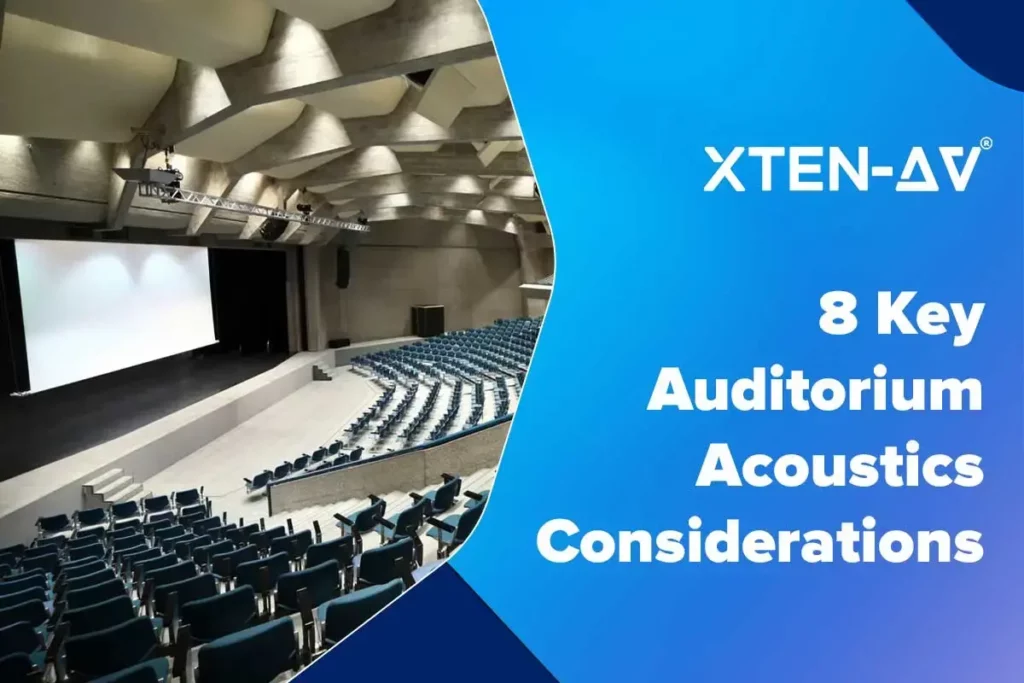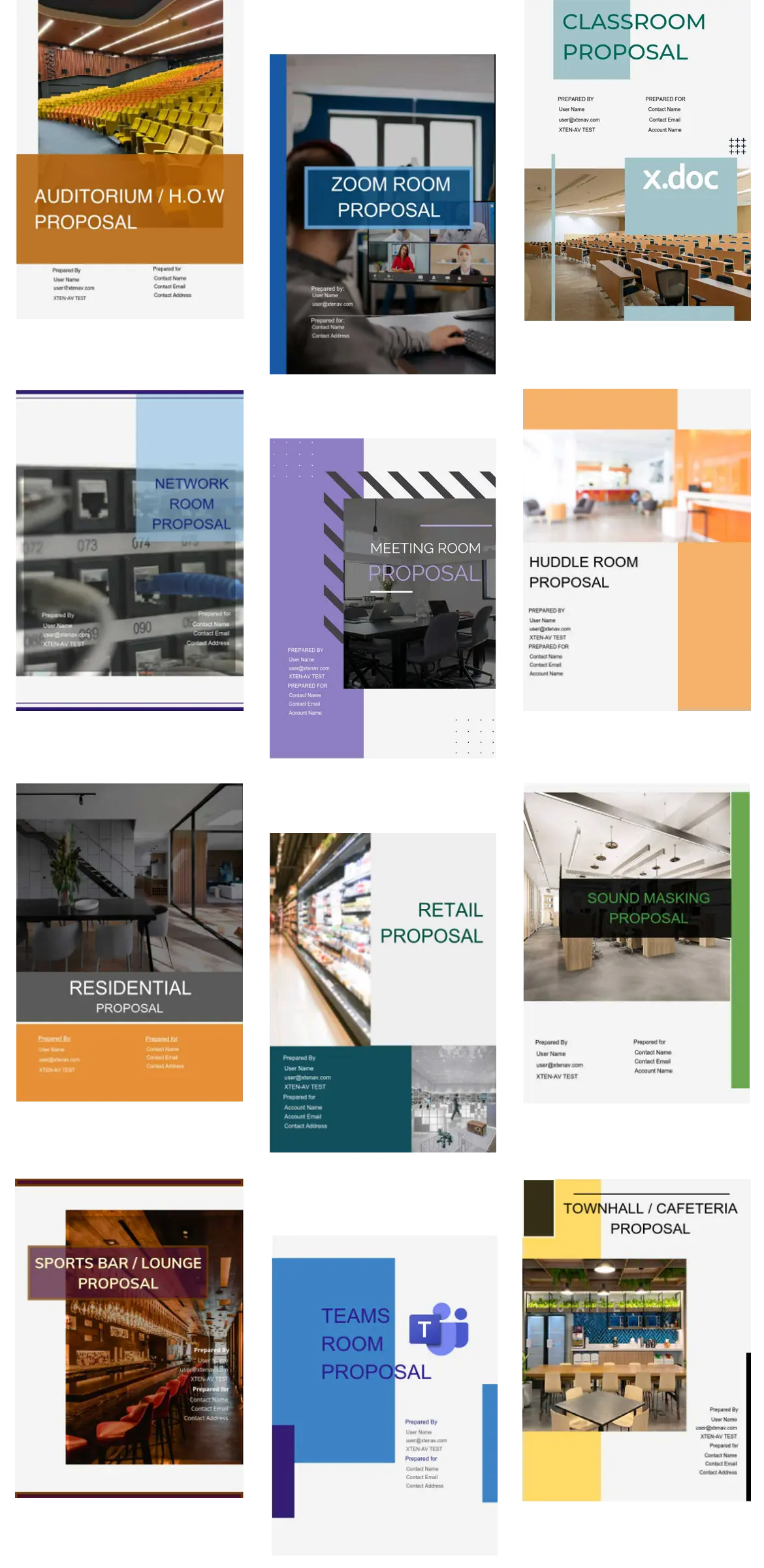Auditorium Acoustics: Top 8 Considerations for Perfect Sound
If you’re involved in designing, building, or managing an auditorium, you know how crucial good acoustics are to creating an unforgettable experience for your audience. But what makes good auditorium acoustics, exactly? And how can you ensure that your auditorium delivers top-notch sound quality? In this blog, we’ll dive into the importance of acoustics in an auditorium, explore the key factors to consider when analyzing acoustics and provide practical tips for improving your auditorium’s sound quality. So, let’s get started!
Key Takeaways
- Learn why good acoustics are crucial for creating an immersive experience in an auditorium, and how they can make or break the success of a performance or event.
- Discover the key factors to consider when analyzing auditorium acoustics, including room size, shape, materials, and intended use, to create a space that delivers exceptional sound quality.
- Find out how to improve auditorium acoustics with practical tips on absorption, diffusion, soundproofing, and speaker placement, to ensure every seat in the house receives high-quality sound.
- Learn how to use X-VRSE, a powerful tool for designing and optimizing auditorium acoustics, to create a space that meets your specific needs and delivers an exceptional audience experience.
- Understand the importance of acoustic treatment, sound system calibration, and regular maintenance in creating an auditorium that truly shines, and how to prioritize acoustics to deliver an unforgettable experience for your audience.
AV Design Mastery + Winning Proposals = 10x Productivity!
- Automatic Cable Labeling & Styling
- 100+ Free Proposal Templates
- Upload & Create Floor Plans
- 1.5M Products from 5200 Brands
- AI-powered ‘Search Sense'
- Legally Binding Digital Signatures
No Credit Card Required
What is the Importance of Acoustics in an Auditorium?
When it comes to creating an immersive experience in an auditorium, acoustics play a starring role. Good acoustics can make or break the success of a performance, presentation, or event. Here are the key reasons why acoustics are crucial in an auditorium:
- Clear Communication: Acoustics ensures that every word, note, and sound is heard clearly by the audience. Poor acoustics can lead to muffled or distorted sound, making it difficult for the audience to understand what’s being said or played.
- Immersive Experience: Good acoustics create an immersive experience for the audience. Clear and balanced sound draws the audience in, making them feel like they’re part of the performance.
- Enhanced Emotional Connection: Acoustics can evoke emotions and create a deeper connection between the audience and the performers. A well-designed acoustic system can make the audience feel like they’re part of a shared experience.
- Increased Engagement: When the sound is good, the audience is more likely to be engaged and attentive. Good auditorium acoustics can increase audience participation, whether it’s through applause, laughter, or even tears.
- Better Sound Quality: Acoustics affect not just the audience but also the performers. Good acoustics provide a better sound quality for the performers, allowing them to deliver their best performance.
- Reduced Echo and Reverberation: Acoustics help reduce echo and reverberation, which can be distracting and make it difficult for the audience to focus.
- Improved Speech Intelligibility: Acoustics play a critical role in speech intelligibility, ensuring that every word is heard clearly and accurately.
- Enhanced Music Quality: Good acoustics are essential for musical performances, bringing out the nuances and complexities of the music.
- Increased Versatility: A well-designed acoustic system can accommodate various performances, from lectures to concerts and everything in between.
- Long-Term Cost Savings: Investing in good acoustics can save money in the long run by reducing the need for costly sound system upgrades or repairs.
- Compliance with Regulations: In some cases, good acoustics are required by law or regulation, such as in theaters or concert halls.
- Enhanced Reputation: A venue with good acoustics can enhance its reputation and attract top performers and events.
- Better Audience Experience: Ultimately, good acoustics create a better audience experience, which is essential for building a loyal following and encouraging repeat business.
There you have it! The importance of acoustics in an auditorium cannot be overstated. By prioritizing good acoustics, you can create a world-class venue that delivers an exceptional experience for performers and audiences.
What Are the Things to Consider When Analyzing Auditorium Acoustics?
When analyzing auditorium acoustics, there are several key factors to consider. Here’s a detailed rundown of the essential elements to examine:
The Size of the Auditorium:
The size of the room has a significant impact on acoustics. A larger room requires more acoustic treatment to prevent sound from getting lost. In a large room, sound waves have to travel farther to reach the audience, which can lead to echoes and reverberation. On the other hand, a smaller room can be more intimate but may require less acoustic treatment. When analyzing the size of the auditorium, consider the room’s volume, seating capacity, and the distance between the stage and the farthest seat.
The Shape of the Room:
The room’s shape can either enhance or detract from the sound quality. A rectangular room with a high ceiling can create echoes as sound waves bounce off the walls and ceiling. A curved or angled room, on the other hand, can help diffuse sound, reducing echoes and creating a more even sound field. Consider the room’s proportions, including the length, width, and height, as well as any irregularities in the shape.
Materials in the Room:
The materials used in the room’s construction can significantly impact acoustics. Hard surfaces like concrete, glass, and metal can create echoes as they reflect sound waves. Soft surfaces like carpets, curtains, and upholstered seats can absorb sound, reducing echoes and creating a warmer sound. Consider the materials used for the walls, floor, ceiling, and seating, as well as any decorative elements like wood paneling or stone features.
Intended Auditorium Uses:
The type of events and performances that will take place in the auditorium can greatly impact the acoustic requirements. For example, a concert hall may require a more reverberant space to enhance the sound of the orchestra, while a lecture hall may require a more absorptive space to reduce echoes and improve speech intelligibility. Consider the types of events that will be held in the auditorium, as well as the type of sound systems and auditorium equipment that will be used.
Doors and Buffer Zones:
Doors and buffer zones can significantly impact the acoustics of an auditorium. Doors can create sound leaks, allowing sound to escape or enter the room, while buffer zones can help reduce external noise and prevent sound from escaping. Consider the location and auditorium design of doors, as well as the use of buffer zones like soundproofing materials or acoustic panels.
Adequate Lighting:
While lighting may not seem directly related to acoustics, it can have a significant impact on the overall experience. Inadequate lighting can create distractions, making it difficult for the audience to focus on the performance. Consider the type and placement of lighting fixtures, as well as the overall lighting design.
Balconies and Orchestra Pits:
Balconies and orchestra pits can create acoustic challenges, as they can disrupt the sound field and create echoes. Consider the design and placement of balconies and orchestra pits, as well as the use of acoustic treatment like sound-absorbing materials or diffusers.
Background Noises:
Background noises like HVAC systems, traffic, and external sounds can greatly impact the acoustics of an auditorium. Consider the sources of background noise, as well as the use of soundproofing materials or acoustic treatment to reduce their impact.
By carefully considering these factors, you can create an auditorium with exceptional acoustics that enhances the overall experience for both performers and the audience.
Now that you’ve understood the consideration, also checkout the do’s and don’ts while designing an auditorium AV system design.
How to Improve Auditorium Acoustics?
Want to create an unforgettable experience for your audience? Improving auditorium acoustics is key. Here are some practical tips to help you fine-tune the sound:
- Custom Acoustics Analysis: Get a professional assessment of your auditorium’s acoustics. A custom analysis will identify areas that need improvement and provide personalized recommendations. Think of it like getting a check-up for your auditorium’s sound system!
- Absorption: Add sound-absorbing materials to reduce echoes and reverberation. Think of absorption like a sponge for sound waves. Use materials like acoustic panels, sound-absorbing curtains, or even strategically placed upholstered seats to soak up excess sound.
- Diffusion: Diffuse sound waves to create a more even sound field. Diffusion is like scattering sound waves in different directions, making the sound feel more immersive and engaging. Use diffusers like acoustic panels, sound-scattering surfaces, or even irregularly shaped walls to create a more dynamic sound.
- Soundproofing: Block external noise and prevent sound from escaping with soundproofing materials. Think of soundproofing like wrapping your auditorium in a cozy blanket to keep the sound in and the noise out. Use materials like mass-loaded vinyl, acoustic caulk, or soundproofing blankets to seal gaps and cracks.
- Acoustic Treatment: Use a combination of absorption, diffusion, and soundproofing to create a balanced acoustic environment. Acoustic treatment is like giving your auditorium a sound makeover. It can include installing acoustic panels, sound-absorbing materials, or diffusers to create a more harmonious sound.
- Speaker Placement: Position speakers strategically to optimize sound coverage and minimize echoes. Think of speaker placement like placing puzzle pieces to create a complete sound picture. Experiment with different placements to find the sweet spot.
- Sound System Calibration: Calibrate your sound system to ensure it’s working in harmony with your auditorium’s acoustics. Calibration is like fine-tuning a musical instrument to get the perfect pitch. Work with a professional to adjust your sound system for optimal performance.
- Regular Maintenance: Regularly inspect and maintain your auditorium’s acoustics to prevent sound quality from deteriorating. Maintenance is like giving your auditorium a regular check-up to keep the sound healthy and happy.
By implementing these tips, you’ll be well on your way to creating an auditorium with exceptional acoustics that will leave your audience in awe.
How Do You Design the Perfect Auditorium Acoustics With XTEN-AV's X-VRSE?
Creating an auditorium with perfect acoustics requires careful planning and attention to detail. With X-VRSE, you can design an auditorium that delivers exceptional sound quality and enhances the overall audience experience. Here’s a step-by-step guide to help you get started:
Step 1: Define the Acoustic Requirements
Determine the type of events the auditorium will host and the desired acoustic characteristics. Will it be used for concerts, lectures, or theater performances? What is the desired reverberation time, sound pressure level, and frequency response? Use X-VRSE’s built-in VR 3D modelling software for av professionals to help you define the acoustic requirements.
Step 2: Design the Auditorium Shape and Size
Use X-VRSE to design the auditorium’s shape and size, taking into account the acoustic requirements. Consider the seating arrangement, stage size, and placement of acoustic treatment. X-VRSE’s 3D modeling capabilities allow you to experiment with different shapes and sizes to achieve the optimal acoustic design.
Step 3: Add Acoustic Treatment and Materials
Select and add acoustic treatment and materials to the auditorium design, such as absorption panels, diffusers, and reflectors. X-VRSE’s library includes a wide range of acoustic materials and products from leading manufacturers. Use the system’s simulation tools to analyze the acoustic performance of the design and make adjustments as needed.
Step 4: Optimize the Speaker Placement and Configuration
Use X-VRSE to design and optimize the speaker placement and configuration. The system’s simulation tools allow you to analyze the sound coverage and frequency response of the speaker system, ensuring that every seat in the auditorium receives high-quality sound. Experiment with different speaker placements and configurations to achieve the optimal sound design.
Step 5: Analyze and Refine the Acoustic Design
Use X-VRSE’s analysis tools to simulate the acoustic performance of the auditorium design. The system provides detailed reports on reverberation time, sound pressure level, and frequency response, allowing you to refine the design and make adjustments as needed. With XTEN-AV, you can create an auditorium with perfect acoustics that delivers an exceptional audience experience.
AV Design Mastery + Winning Proposals = 10x Productivity!
- Automatic Cable Labeling & Styling
- 100+ Free Proposal Templates
- Upload & Create Floor Plans
- 1.5M Products from 5200 Brands
- AI-powered ‘Search Sense'
- Legally Binding Digital Signatures
No Credit Card Required
Get Started with Our Auditorium Plan Proposal Template
Need a head start on your auditorium design? Download our free Auditorium Plan Proposal Template, designed to help you create a comprehensive plan and proposal for your project. This template includes a detailed outline of the design process, acoustic requirements, and technical specifications.
Conclusion
And there you have it! With this comprehensive guide, you now understand the importance of acoustics in an auditorium and practical tips for improving your auditorium’s sound quality. Whether designing a new auditorium or renovating an existing one, we hope this guide has provided you with valuable insights and inspiration. Remember, good acoustics are key to creating an unforgettable experience for your audience. You can create an auditorium that truly shines by prioritizing acoustics and using the right tools and techniques. Book a free trial with our experts to experience XTEN-AV firsthand.
Frequently Asked Questions
Good acoustics in an auditorium require a perfect balance of sound waves. The conditions include optimal reverberation time (1.5-2.5 seconds), even sound distribution, minimal echoes and reverberation, good speech intelligibility, low background noise, and balanced frequency response. This ensures a clear and enjoyable listening experience.
Improve your auditorium acoustics by adding sound-absorbing materials, diffusers, and soundproofing materials. Use acoustic panels, sound-absorbing curtains, and strategically placed seating to reduce echoes and reverberation. Consider upgrading your sound system and calibrating it for optimal performance. Regular maintenance and adjustments can also make a big difference.
The three components of acoustics are Absorption, Diffusion, and Reflection. Absorption reduces sound waves, Diffusion scatters sound waves, and Reflection bounces sound waves back. A balanced combination of these components creates a harmonious acoustic environment, ensuring a clear and enjoyable listening experience in your auditorium.



